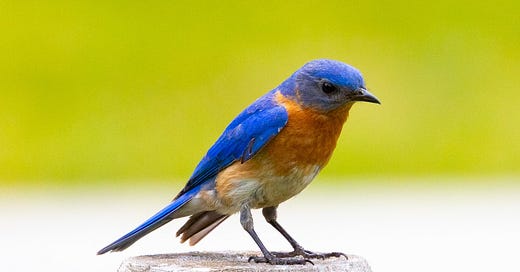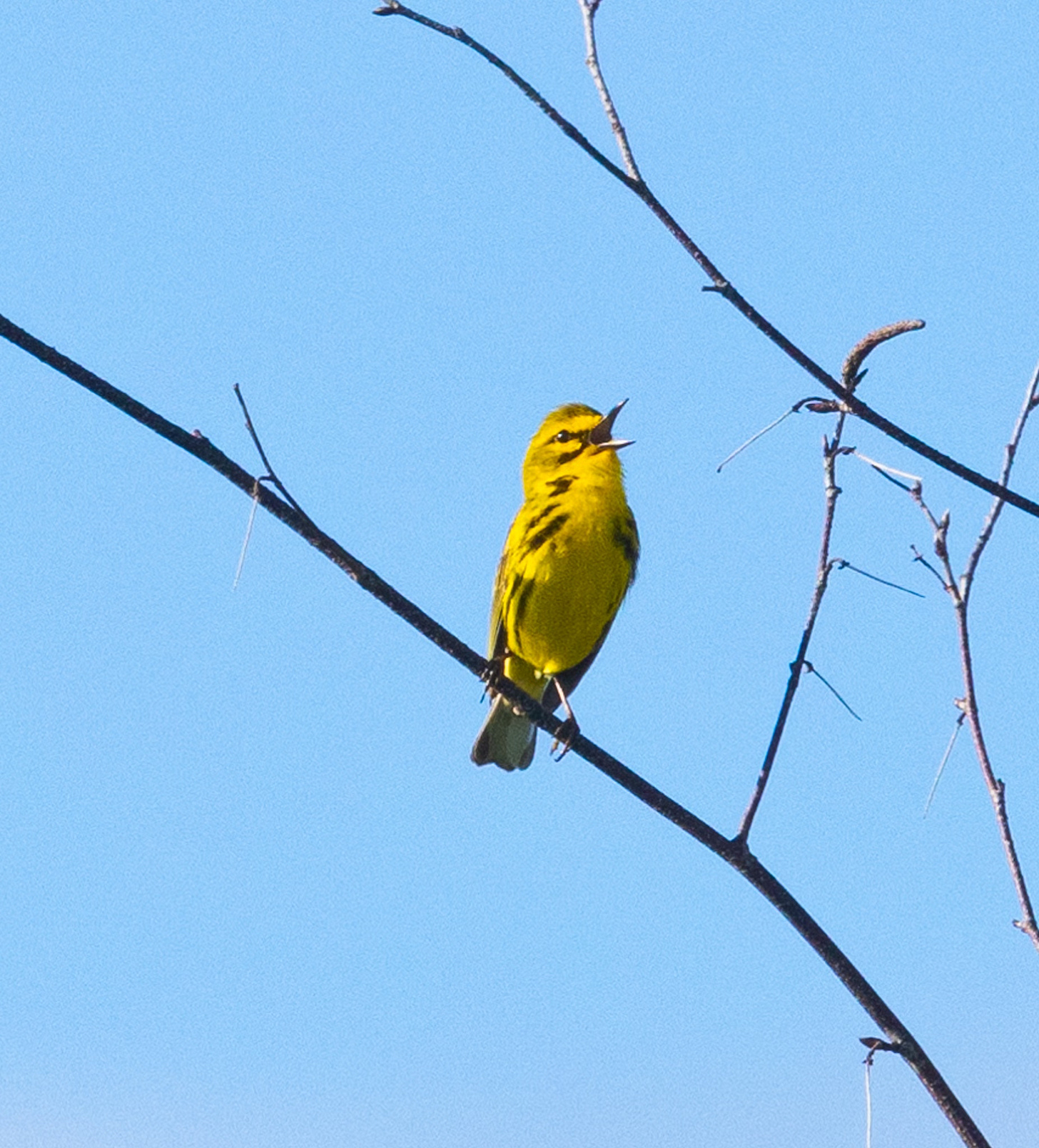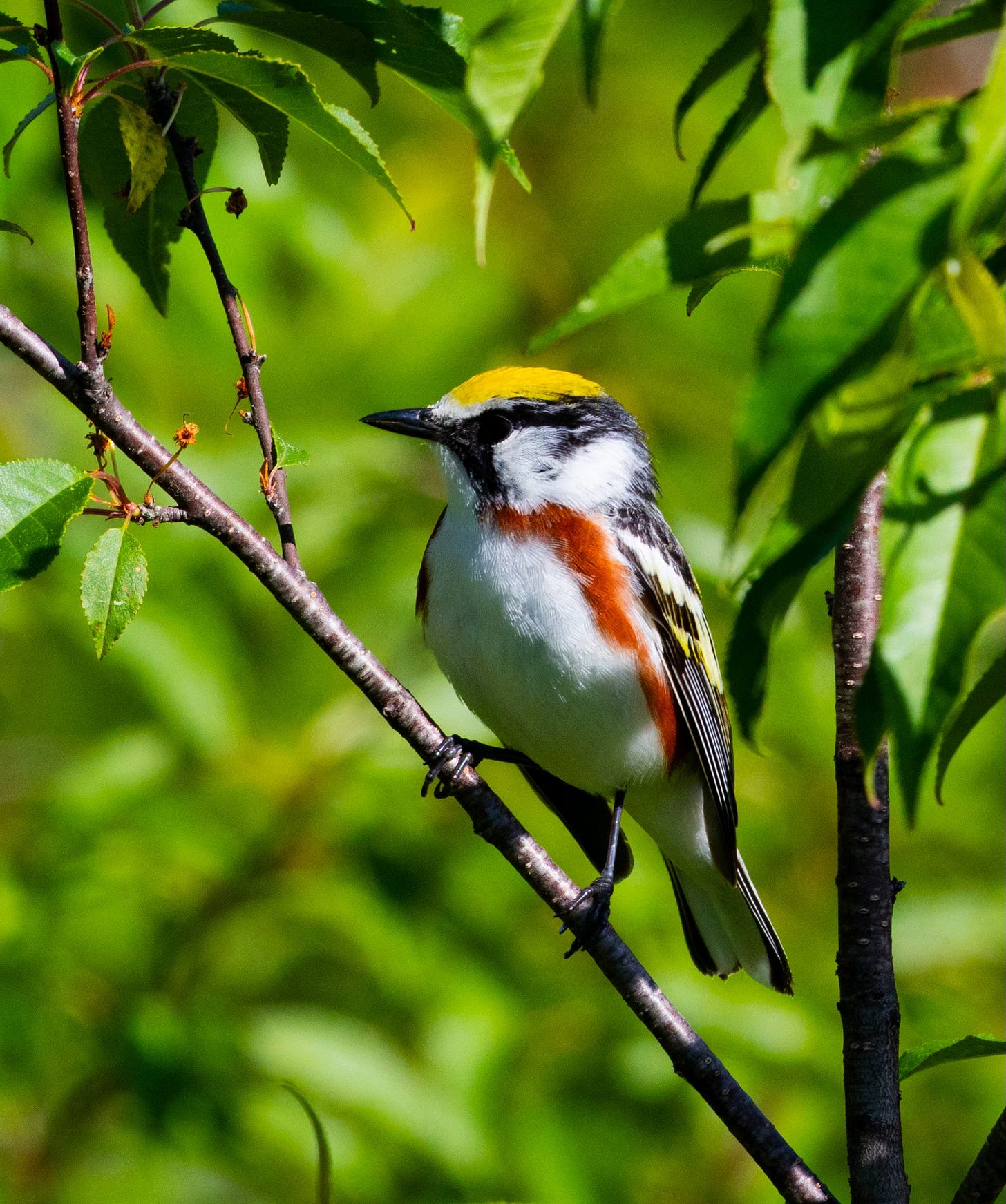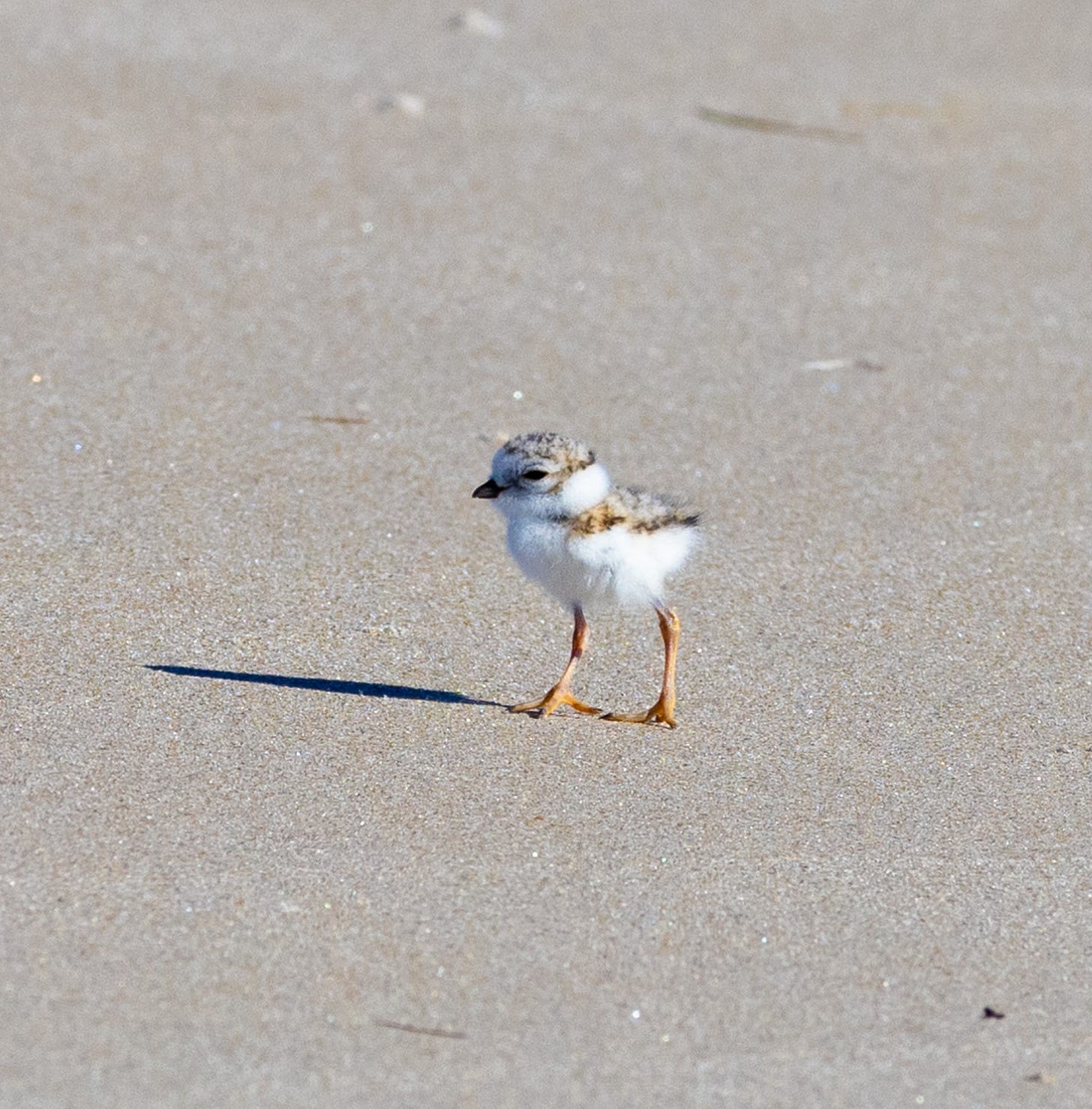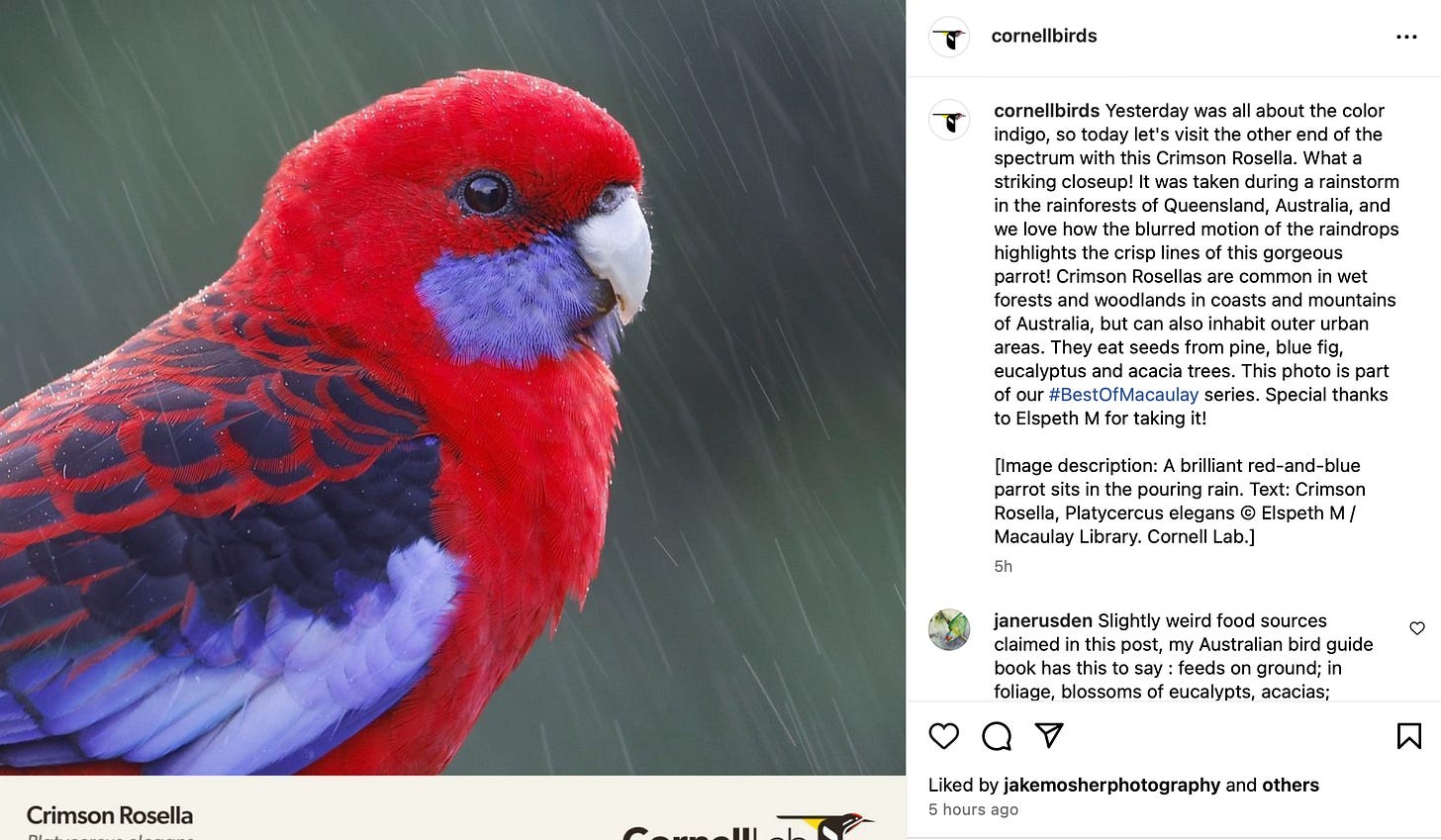1. “Just be a bird” - Clever new social media trend in China: Tired of the nine-to-five? Want to just fly away from it all? Well, students in China are attempting to do just that in a new social media trend, which sees users tuck their hands into oversized t-shirts and perch on household objects. The accompanying captions include variations of “don’t go to work, just be a bird instead”. If only Twitter was still around to see it. However, this isn’t just a funny trend – these birds sing a song of exploitative working conditions in China’s faltering post-COVID economy. Many posts reference the infamous ‘996’ system, which forces employees to work from 9am to 9pm, six days a week (so a 72-hour working week). Despite being technically illegal under Chinese labour laws, many companies still enforce the policy, allegedly even TikTok’s own parent company ByteDance. (via Dazed Magazine)
2. When dogs don’t seem to work, who you gonna call? At this prison in Brazil, you call the “Geese agents”: A prison in southern Brazil has come up with a novel way to bolster security: replacing guard dogs with geese. A squadron of nine silky-feathered birds—the “geese agents,” as guards call them—now patrol the grassy strip of land between the inner fence and the outer wall at the high-security prison here in São Pedro de Alcântara, a small town some 400 miles north of the border with Uruguay. (via Wall Street Journal)
By Hap Ellis, Eastern Bluebird - Kennebunkport, ME.
3. “Woefully short” - Conservation groups blast BLM’s latest Sage Grouse plans: Conservation organizations submitted comments today blasting the U.S. Bureau of Land Management’s draft amendment for 77 land-use plans across the western United States intended to protect the imperiled greater sage grouse. The bird is an umbrella species whose survival is intricately linked to the health of the vast Sagebrush Sea ecosystem. The groups say the administration’s preferred alternative falls woefully short of what’s needed to stem the bird’s downward population spiral. The U.S. Geological Survey found that the population declined nearly 80% between 1968 and 2023 and a shocking 40% since 2002. The plans apply to 69 million acres of BLM-managed public lands across 10 western states, which amounts to about half of the remaining habitat for the greater sage grouse. (via Biological Diversity)
4. Wait! Seems like you just got here!!: The first of the BTO-tagged Common Cuckoos has commenced its autumn migration back to Africa. An Irish cuckoo known as 'Cuach Cores' left its summer home of Killarney NP, Co Kerry, on 5 June, arriving in Brittany, France, the following morning. Cuach Cores spent only 28 days in Ireland, having been the latest tagged cuckoo to arrive back on breeding grounds in May. The news that cuckoos are beginning to move south comes as the BTO revealed that a further nine birds were tagged in England and Scotland this spring. (via BirdGuides)
5. Rare Bird Alert! Look who TNC found in their Milford Park Preserve in Delaware: Nestled in southern Delaware, Milford Neck Preserve is a lush sanctuary teeming with marshes that seem to stretch without end, providing the perfect habitat for rare and secretive birds. As dusk falls, these marshlands come alive with a symphony of natural sounds and the calls of hidden birds and insects echoing through the night. After two years of testing and assessing the park, researchers made a discovery that surprised environmentalists and nature lovers: the appearance of the rare and threatened black rail bird. (via WHYY)
6. Troubling! “Two-thirds of key forest habitats for birds in Central America are at risk of being destroyed by “narco-driven” deforestation”: Cocaine consumption is threatening rare tropical birds as narco-traffickers move into some of the planet’s most remote forests to evade drug crackdowns, a study has warned. Two-thirds of key forest habitats for birds in Central America are at risk of being destroyed by “narco-driven” deforestation, according to the paper, published on Wednesday in the journal Nature Sustainability. For 40 years, US drug policy has not reduced the global scale of the illegal networks, but instead driven the traffickers deeper into forests, researchers said. There, traffickers create landing strips and roads to move shipments, as well as cattle pasture to launder money and control territory. (via The Guardian)
By Hap Ellis, Prairie Warbler - Kennebunk Plains, Kennebunk, ME.
7. Collateral benefits in the contentious effort to genetically “de-extinct” the Dodo on Mauritius? Well yes, it might help that island’s Pink Pigeon avoid extinction: Vikash Tatayah had never heard of Colossal Biosciences until the Texas-based company announced plans last year to bring back the dodo. Widely known for wanting to “de-extinct” the woolly mammoth, it said it was making strides in the genetic engineering of dodo-like birds, which would then be brought to Mauritius, one of the Indian Ocean’s Mascarene islands and the dodo’s sole habitat before extinction. Whether genetic engineering should be used for conservation remains contentious, and many are especially wary of de-extinction. But a year later, Tatayah sees the potential return of the dodo as a way to simultaneously rescue endangered species – in particular the pink pigeon. “We are very keen for the dodo to be brought back,” he says. (via New Scientist)
8. A small helicopter with 250,000 passengers? Yup, in Hawaii: Every week at the Maui airport, a small helicopter gets loaded with 250,000 passengers. They're male mosquitoes, key players in a strategy that could be the last, best hope for Hawaii's endangered birds. "We got mosquitoes to drop," Christa Seidl of the Maui Forest Bird Recovery Project calls to the pilot. She wheels over a crate with several hundred cardboard tubes filled with mosquitoes. Soon, they’ll be airdropped into Maui's high-elevation forests, the last refuge for endangered birds. There were once more than 50 species of Hawaiian honeycreepers, small colorful birds that filled the native forests and have important significance in Native Hawaiian culture. Now, those forests are going silent. Only 17 species of honeycreeper are left, with some expected to go extinct in the wild as soon as this year. (via National Public Radio)
9. Gardeners take note - “Neonic dangers” - an interview with the American Bird Conservancy’s Hardy Kern, Director of Government Relations, Birds and Pesticides Campaign: I suspect every gardener has for years now over and again heard the warnings about the most widely used pesticides in the United States, neonicotinoids—or neonics for short. In 2013, the American Bird Conservancy issued a report warning of their impact on terrestrial and aquatic ecosystems, and especially the ripple effect their use was having on birds. The Conservancy has issued an updated report with a telling headline, “Neonicotinoid Insecticides failing to come to grips with a predictable environmental disaster.” So where are we now with limiting the use of these pesticides and what can we as citizens and gardeners do to help in the effort? (via Away to Garden)
10. One downside of gorging on cicadas: it’s an unbalanced diet: In late May, Willowbrook Wildlife Center in Glen Ellyn began experiencing an uptick in birds admitted with eye issues — swollen eyelids, crusted eyes and damaged corneas. If those symptoms ring a bell, it’s because they’re the same signs seen in songbirds back in 2021 when a “mystery disease” struck populations across parts of the eastern U.S. The suspected link between the two outbreaks? Cicadas. (via WTTW News)
By Hap Ellis, Chestnut-sided Warbler - Kennebunk Plains, Kennebunk, ME.
11. A University of Florida study on how hawks use their lungs to modify the biomechanics of their flight muscles: Soaring birds — like osprey, eagles, falcons, even vultures — can stay aloft in the air seemingly forever, rarely flapping their wings. They glide along rising air currents in a way that has fascinated humans and scientists for centuries. Now, an international team of researchers led by University of Florida evolutionary biologist Emma Schachner, Ph.D., has reported for the first time that soaring birds use their lungs to enhance their flying in a way that has evolved over time. The team’s study was published today in Nature. In short: Unlike the lungs of mammals, bird lungs do more than just breathe. An air-filled sac within the birds’ lungs is believed to increase the force the birds use to power flight muscles while soaring. (via UF Health)
12. Polyandrous birds evolve more quickly suggests this study from University of Bath's Milner Centre for Evolution: New research led by the University of Bath's Milner Centre for Evolution shows that shorebird species where females breed with multiple males in each season evolve significantly faster than monogamous species. Their findings suggest that mating systems of birds have a stronger effect on evolution rates than previously thought. The researchers, publishing their findings in the Proceedings of the Royal Society B, tracked genetic changes in the one of the sex chromosomes and investigated the effect of different mating systems on the rate of evolution of species. All animals have two copies of each chromosome—one inherited from the mother and one from the father, with biological sex being determined by the sex chromosomes. Whereas mammals have XX (female) and XY (male) sex chromosomes, birds have a different system with males having ZZ and females having ZW chromosomes. (via Phys Org)
By Hap Ellis, Piping Plover - Wells Reserve at Laudholm, Wells, ME.
13. Travelogue #1 - Birding in Sattal (India): At the cusp of spring and summers in Delhi, I travelled to Sattal, an ecologically rich and unspoiled biome in the lower Himalayas, in Nainital district of Uttarakhand. Sattal or Sat Tal (lit. 'Seven lakes'), the name itself reveals the unique proprietary of the place. Dense oak forests, huge pine trees and a group of seven interconnected freshwater lakes make for the beauty of Sattal. And when it comes to its avian diversity, even the non-bird lovers experience a change of heart. Conducive weather conditions and thriving ecosystems make it a comfortable place for both winter and summer migratory birds. The breeding avifauna of Sattal tempts birders and bird photographers from around the world to come for a true Himalayan birding experience. (via Times of India)
14. Travelogue #2 - A little closer to home maybe: Whether you’re an experienced or hobbyist bird watcher, many of Iceland’s most beautiful and iconic birds can be seen near the capital area. While heading off to the isolated breeding grounds of Þjósárver might be a grand adventure (or even “just” apuffin tour in the Westman islands), you don’t need to head off to the wilderness to appreciate the diverse and fascinating bird life that Iceland has to offer. (via Iceland Review)
15. Finally, two books for the summer reading list (“The Bald Eagle: The Improbable Journey of America’s Bird” & “A Message From Martha”): I’m a little late with this column and the best excuse I can give is spring migration. I’ve been birding, OK? Now, on a rainy day before Memorial Day, I’m finally collecting my thoughts about an eventful May, the month that watchers hate to see end. Two books also kept me from my writing table. First came “The Bald Eagle: The Improbable Journey of America’s Bird,” a 400-pager by Jack E. Davis, a Pulitzer Prize winner. The Bald Eagle is quite the recovery story, a great victory for conservation. Davis covers that, of course, and tons of other information. Benjamin Franklin, I learned, did not formally propose the Wild Turkey as our national bird, and even today the Bald Eagle does not officially hold that title.
Exactly 10 years ago we were commemorating the 100th anniversary of the last Passenger Pigeon on earth. Her name was Martha, and today she’s inside a glass display case at the Smithsonian’s National Museum of Natural History. I visited her in April. I knew a few things but needed more. “A Message from Martha,” by Mark Avery, provided the answers. The 2014 book had somehow eluded me until now — 110 years after Martha’s lonely death at the Cincinnati Zoo. Avery, a Brit, takes readers along on a Passenger Pigeon road trip in telling a fascinating story that every birder should know.
Bird Videos of the Week
Video by NBC News, “Birdwatchers flock to Long Island to see rare bird”.
Cornell Live Bird Cam - Crimson Rosella.
Cornell Live Bird Cam - Indigo Macaw.

